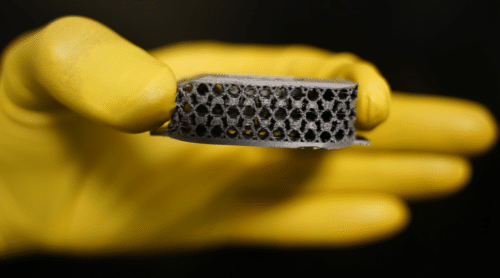Integration of electronics for sensing, energy storage, and wireless communication into compact devices poses major hurdles. Scientists have now taken a step toward making this integration easier.

“A viable solution to all of these challenges is to create a new class of smart implants that can utilize their constituent components to achieve advanced functionalities without using any external power source and bulky electronics,” explained Amir Alavi, a professor in the Department of Civil and Environmental Engineering and the Department of Bioengineering at the University of Pittsburgh.
Alavi’s research group recently developed a smart, self-aware device for detecting spinal fusion for bone healing purposes. “This is clinically significant because these devices can provide physicians the ability to directly and more precisely assess the progress of fusion compared to advanced radiographic imaging,” said Alavi. “Note that imaging modalities are also costly and expose patients to significant radiation.”
The intervertebral discs, which are piled on top of each other, separate the bones or vertebrae in the spinal column. Intervertebral fusion cages aid spinal fusion in the area between neighbouring vertebrae after a damaged or deteriorated disc is removed through surgery. Alavi’s research team has created a fusion cage that can independently assess the development of spinal fusion based on the force sensed by the smart cage. “We develop these implants using our patented meta-tribomaterial technology,” he said.
The smart fusion cage initially bears the majority of the spinal load when it is put into the disc space. The strain placed on the cage during healing eventually decreases and shifts to the bone structure developed inside and surrounding the cage. The self-aware cage generates a voltage signal that is proportional to the forces applied to its structure, and the voltage lowers during the fusion process.
“We have also tested these spinal implants using synthetic spine and human cadaver spine models,” explained Alavi. “While orthopedic implants seem to be the most immediate application area, other medical fields can also benefit from our technology. For instance, the same approach can be used to design smart cardiac stents with sensing and energy harvesting functionalities,” he added.






